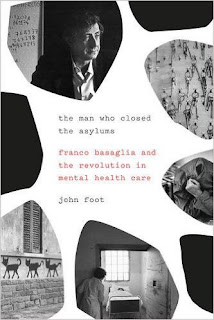L'homme et l'air. Invention et transformations des pratiques aéronautiques et sportives (XVIIIe-XXIe siècle)
Appel à communications
Cette journée d’étude s’intéresse aux modes d’inscription de l’activité humaine dans l’élément aérien, qu’il s’agisse de considérer les usages de l’air (ludiques, performatifs, spectaculaires) ou la production d’objets techniques et de biens culturels et les représentations suscitées par l’essor des pratiques liées à la conquête de l’air. Il s’agira d’éclairer les processus historiques, sociaux, anthropologiques qui participent au cours des XIXe-XXIe siècles à l’élaboration d’une culture aérienne et qui installent cette culture et les nouveaux pouvoirs du « corps aérien » dans la transformation des usages et des représentations du monde.
À la fin du XVIIIe siècle, l’invention de l’aérostation permet aux hommes d’affronter la troisième dimension. Dès le début du XIXe siècle, ascensions acrobatiques et descentes en parachute comblent d’aise un public séduit par le spectacle de la prise de risque, de la maîtrise et de la performance. L’essor des sports aériens est largement dynamisé par l’invention de l’aéroplane. L’idée d’un engin planant à ailes fixes s’est imposée au XIXe siècle, portée par l’accélération scientifique et technique. Mais les premiers vols humains sont réalisés sans moteur. De 1891 à 1896, l’ingénieur allemand Otto Lilienthal réalise plus de 2.000 vols planés en décollant à pied sous une quinzaine de planeurs de sa conception. A partir de 1901, les frères Wright réalisent aux États-Unis plusieurs centaines de vols planés sous des planeurs biplans avant d’y adjoindre un moteur pour réaliser le premier vol d’un avion le 17 décembre 1903. Le vol plané continue sous la forme du vol à voile qui s'oriente rapidement vers les records de distance et de vitesse. La renaissance du vol plané à décollage à pied commence en Californie à la fin des années 1960. Des bricoleurs passionnés expérimentent en décollant à pied les premières ailes qu’ils ont construites. L’aile delta « standard » à voilure souple est née et va s’exporter dans le monde entier. En France, le hang gliding est rebaptisé « vol libre ». Cette dénomination résume bien l'état d'esprit des premiers pratiquants face aux utilisateurs habituels de l'espace aérien. Aujourd’hui, l’homme investit l’air au travers de nombreuses activités. De l’avion au passage du mur du son en chute libre par Felix Baumgartner, en passant par le speed-riding, l'aile delta, le parapente, le parachutisme, le base-jump, le vol à voile, l'aviation, l'ULM, le paramoteur, les montgolfières et les dirigeables. Sans oublier le vol en apesanteur, le vol spatial et l’utilisation ludique de l’air avec le cerf-volant, le kite-surf et les autres formes de traction. La palette des engins volants et des activités associées est immense.
Si des monographies existent pour certaines pratiques aériennes qui intègrent progressivement la sphère du loisir corporel ou des sports, comme le parachutisme (Loirand 1989), l’aérostation et les débuts de l’aviation (Robène 1998), le deltaplane (Jorand, 2000), en revanche bien des activités, anciennes, nouvelles ou réinventées, sont restées dans l’ombre ; d’autre part les études comparées et les travaux de synthèse manquent. Cette journée scientifique placée sous l’égide de la SFHS (Société Française d’Histoire du Sport) entend appréhender de manière suffisamment large les modes d’inscription de l’activité humaine dans l’élément aérien, qu’il s’agisse de considérer les usages de l’air (ludiques, performatifs, spectaculaires) ou la production d’objets techniques et de biens culturels et les représentations suscitées par l’essor des pratiques liées à la conquête de l’air. L’histoire constitue la discipline scientifique de référence mais toutes les sciences sociales sont concernées. Il s’agira d’éclairer les processus historiques, sociaux, anthropologiques qui participent au cours des XIXe-XXIe siècles à l’élaboration d’une culture aérienne et qui installent cette culture et les nouveaux pouvoirs du « corps aérien » dans la transformation des usages et des représentations du monde. A titre d’exemple, les communications pourront concerner les entrées suivantes : pratiques et pratiquant-e-s, transformation des rapports à la nature, recherche de nouvelles sensations, inventivité, création, innovations technique et technologique, performance, risque, « sportivisation », médiatisation et représentations, codification, institutionnalisation et territorialisation des pratiques aéronautiques et sportives, etc.
Modalités pratiques d'envoi des propositions
Les textes d’intention, comprenant le titre, les principales questions, les sources et la méthodologie (3000 signes et 5 mots clés) sont à envoyer
avant le 15 octobre 2015 aux deux adresses suivantes : Luc Robène
luc.robene@u-bordeaux.fr et Dominique Jorand
dominique.jorand@ujf-grenoble.fr
Bibliographie succincte
Jorand, Dominique, Histoire et sociologie du vol libre français. Structure, oppositions, enjeux. Thèse de doctorat, Orsay, Université Paris XI, 2000.
Loirand, Gildas, « De la chute au vol. Genèse et transformation du parachutisme sportif ». Actes de la recherche en Sciences Sociales, 79, 1989, 37-49.
Robène, Luc, L’homme à la conquête de l’air. Des aristocrates éclairés aux sportifs bourgeois, 2 t., Paris, L’Harmattan, 1998.
Organisation
Journée d’étude, organisée à Valence (UJF Grenoble), le 3 décembre 2015, par
Dominique Jorand (Université de Grenoble)
Luc Robène (Université de Bordeaux),
avec le soutien de
la Société Française d’Histoire du Sport (SFHS)
laboratoire Sport et Environnement Social (SENS)
Comité scientifique
Michaël Attali, Université Rennes 2
Natalia Bazoge, Université de Grenoble
Dominique Bodin, Université Paris-Est Créteil
Françoise Lucbert, Université de Laval
Doriane Gomet, Université de Rennes
Dominique Jorand, Université de Grenoble
Jean-Marc Olivier, Université de Toulouse
Christian Pociello, Université Paris Orsay
Luc Robène, Université de Bordeaux
Jean Saint-Martin, Université de Strasbourg
Solveig Serre, CNRS
Thierry Terret, Université Lyon 1
Stéphane Tison, Université du Maine
Christian Vivier, Université de Franche Comté
Publication
Une publication des travaux est envisagée dans le cadre d’un ouvrage ou sous la forme d’un numéro spécial dans une revue scientifique.
Lieux
Université Joseph Fourier, Site Rabelais - 23 chemin des Huguenots
Valence, France (26)
Contacts
Dominique Jorand
courriel : dominique [dot] jorand [at] ujf-grenoble [dot] fr
Luc Robène
courriel : luc [dot] robene [at] u-bordeaux [dot] fr
URLS de référence








